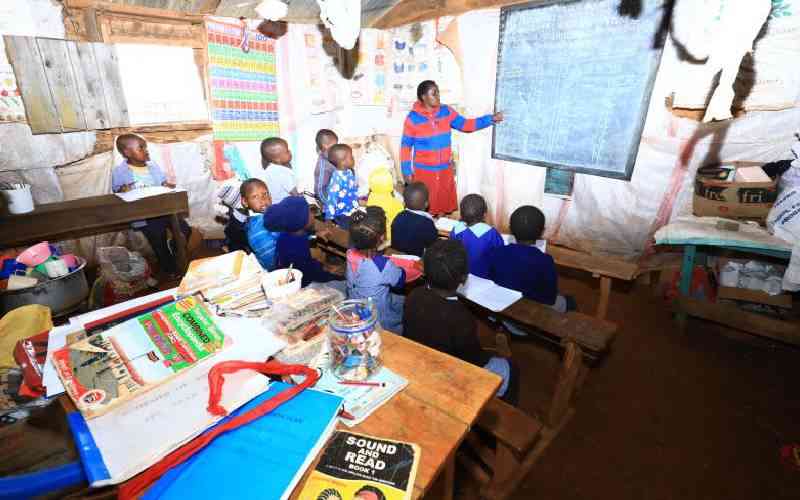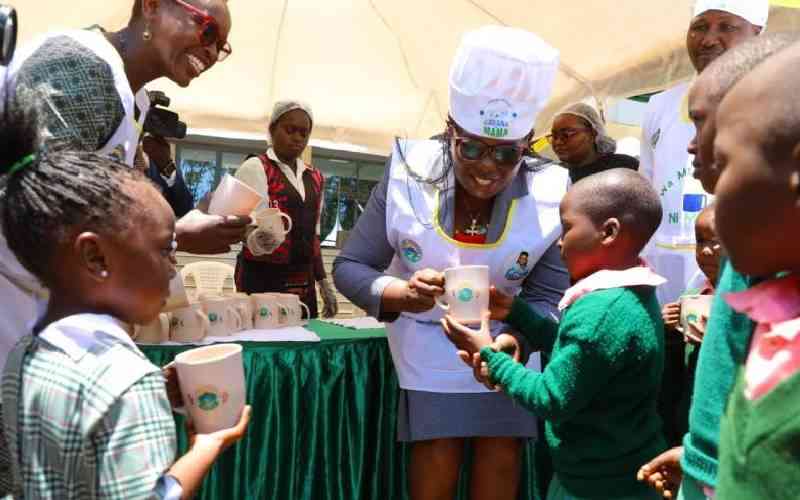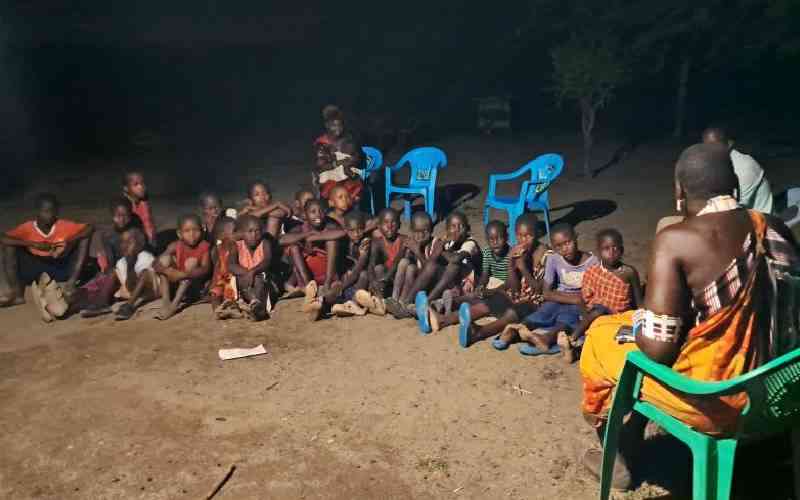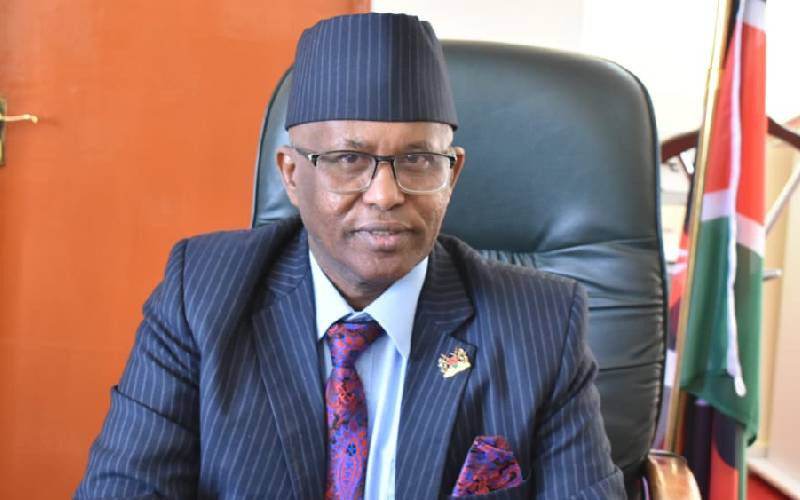Today marks International Education Day, making it an opportune moment to reflect on Kenya’s own education journey and the opportunities and challenges the country faces.
Across the world, an estimated 258 million children are locked out of school, while over 600 million teenagers are unable to read or do basic math. For girls across sub-Saharan Africa, fewer than 40 per cent will go on to complete lower secondary school. For many decision-makers across Kenya and Africa alike, the answer is often to build more schools in the belief that all children will benefit.
And this is a fair assumption, but it masks a complex reality. To ensure children do well in school, it is of paramount importance to give them a strong early start in their learning. This ensures holistic development and good positioning as far as their development is concerned. According to the United Nation Convention on the Right of the Child (UNCRC) and the African Charter on the Rights and Welfare of Children (ACRWC), Education as a basic right forms one of the most promising elements towards ensuring a brighter future for children in Africa and beyond.
A UK NGO, Theirworld - set up by Sarah Brown, the wife of the former British Prime Minister and education campaigner Gordon Brown – highlights the first five years of a child’s life as the most critical for a child’s development; and by investing in high-quality Early Childhood Development and Education (ECDE), countries will be providing a platform for children to thrive throughout the entirety of their education.
With the promulgation of Kenya’s Constitution in 2010, the role of early Childhood Education was assigned to the county governments, bringing the service closer to the people. This presents an opportunity for each county to budget and support children through realising a brighter future. Many Counties have achieved a lot while others still have an opportunity in ensuring that ECDE has been well budgeted for to give its children the best start in education.
Some of the bigger challenges that hinder most counties from achieving these goals include, but are not limited to, financial constraints, teacher-student ratio (where in some instances we have 40 or more children being taught by one teacher), poor facilities with no books or toys for children to play with, accessibility of ECDE centres by children where they have to walk long distances without getting healthy snacks to keep their energy up for learning. Nutrition is one of the other major challenges with most Counties not having managed to budget for the entire year feeding program.
This is why we need to see counties follow the lead of places like Siaya, Makueni and Kwale, and invest much more in ECDE. These three counties have put a great focus on early learners and gone ahead to investment in quality learning facilities, with properly ventilated classrooms, safe clean water, kitchens, as well as furniture and toilets suitable for children, and - critically - age-appropriate learning materials.
There is every reason to believe that Kenya can be a beacon for ECDE, setting the agenda across the wider region, and stepping up for other countries to follow. With 76 per cent of children enrolled in ECDE nationally, the foundations are already in place. The next step is to ensure that the most marginalised children - those with disabilities, or affected by HIV/AIDs - are prioritised.
Literacy rates
Kenya also needs to establish itself as a leader in terms of teaching standards. Being an ECDE teacher is its own distinct discipline requiring a different set of skills from teaching at primary and secondary school levels. Play-based learning, whether it’s through singing, storytelling, or providing the space for children to explore their own creativity and imagination, is absolutely integral to a child’s development. With it, children will develop crucial cognitive and socio-emotional, and motor development skills that are the foundations of good literacy and numeracy.
The imbalance in literacy rates in Kenya between children in rural and urban areas demonstrates why children from the poorest communities need high-quality ECDE the most. Literacy rates in Nairobi and Kiambu are much higher than in Turkana, Wajir and Garissa. As UNICEF has evidenced, high-quality ECDE is crucial for ensuring that all children have the opportunity to learn and thrive. Just as importantly, ECDE also increases the chance of children completing primary school.
With a national literacy rate of just over 65 per cent, Kenya has some work to do. And this means stepping up investment in ECDE. In 2015, the country spent 1.8 per cent of its overall education budget on pre-primary. Their world is calling on governments across the world to increase investment to 10 per cent of education spending.Devolution in Kenya presents a greater opportunity for improving the situation of early learners, but this starts with the leadership. By investing more, dynamic, future thinking leaders, this can make a difference for our children. The pay-off has the potential to yield enormous rewards. As the World Bank and others have highlighted, investment in the early years pays off, with every dollar spent yielding a return of $17 dollars in the long-term.
This gives us pause for thought on International Education Day. If there is one investment in education that will improve the lives of children in Kenya, then spending more on ECDE is surely it. This means being brave. But it is also the best way of meeting our international commitments to ensuring all Kenyan children receive inclusive and equitable education. At the dawn of a new decade, governors have a huge opportunity to make their mark, and ensure the prosperity of future generations.
Mr Ngaira is an education expert specialising on ECDE
Stay informed. Subscribe to our newsletter
 The Standard Group Plc is a
multi-media organization with investments in media platforms spanning newspaper
print operations, television, radio broadcasting, digital and online services. The
Standard Group is recognized as a leading multi-media house in Kenya with a key
influence in matters of national and international interest.
The Standard Group Plc is a
multi-media organization with investments in media platforms spanning newspaper
print operations, television, radio broadcasting, digital and online services. The
Standard Group is recognized as a leading multi-media house in Kenya with a key
influence in matters of national and international interest.
 The Standard Group Plc is a
multi-media organization with investments in media platforms spanning newspaper
print operations, television, radio broadcasting, digital and online services. The
Standard Group is recognized as a leading multi-media house in Kenya with a key
influence in matters of national and international interest.
The Standard Group Plc is a
multi-media organization with investments in media platforms spanning newspaper
print operations, television, radio broadcasting, digital and online services. The
Standard Group is recognized as a leading multi-media house in Kenya with a key
influence in matters of national and international interest.








